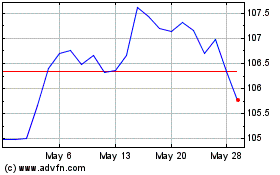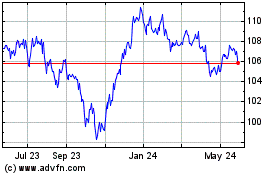There always seem to be a healthy debate over the correct
multiple for the stock market. The controversy is easy to
fuel as the market’s PE ratio fluctuates over time and can be
influenced by various factors. In the end, the PE ratio is
determined by what investors are willing to pay for earnings or
perceived earnings. Let’s look at a few factors which can
determine the market’s PE ratio:
Using the average:
The simplest way to look for a fair or reasonable PE ratio is to
examine history and find an average. Based on trailing
4-quarter GAAP earnings and the time period between 1935 and Q1
2013, the average PE ratio for the S&P 500 has been 15.86
excluding the financial crisis in 2008 and 2009. The Great
Recession biases the data and tends to lift the PE ratio average.
The standard deviation of the average is 6.45. Assuming
the distribution of PE values is normal, about 68% of the PE
readings will fall within one standard deviation or between 9.41 or
22.31. The graphic highlights the trend.

One could view the market as cheap or expensive as it moves
outside one standard deviation, but this process will still create
a lot of uncertainty over the fair PE value. There is a lot
of room between 9.41 and 22.31 and even a meaningful difference
between 14 and 17. With the S&P 500 expected to earn
about $100 per share on a GAAP basis in 2013, a one point change in
the PE ratio equates to 100 S&P 500 points or almost a 6% move
at 1700.
The current PE ratio for the 4-quarters through Q2 2013 is
17.62. Based on current estimates and prices, it is expected
at 16.74 at the end of 2013 and 15.15 at the end of 2014.
Looking at relative value:
It is awkward to compare a PE ratio to the yield on a treasury
or corporate note. It is difficult to relate a 20 PE ratio to
a 5.00% yield. However, to solve this problem many
analysts look at the inverse of the PE ratio or the earnings yield
(E/P ratio) and compare it to the yield on a fixed income
product. When a 20 PE ratio is inverted and
becomes an E/P ratio, the yield is 5.0% and similar to a corporate
or treasury note. Investors treat the earnings like the
coupon payment of a note or bond.
Given the Fed is buying treasuries and distorting the treasury
market, it might be better to look at the relationship between the
S&P 500 and corporate debt. The Moody’s Baa corporate
yield is a popular measure of corporate debt. A Baa rating is
neither highly protected nor poorly secured, and is a good
representative of corporate debt yields.
It looks like the S&P 500 will post an earnings yield of
5.68% at the end of Q2 and this will compare to a Baa corporate
yield of 5.19% at the end of June. The current Baa yield is
about 5.30%. In recent history, since the mid 1950’s, it has
been unusual for the S&P 500 earnings yield to be in excess of
the Baa corporate yield. However, before the mid
1950’s, the earnings yield on equity was persistently above
the yield on the Baa.

The graphic indicates that valuation can look cheap or expensive
depending on the period of reference. The average spread
between the S&P 500 earnings yield and the Baa corporate is
0.16% between 1935 and Q1 2013. The median spread is -0.33%.
The standard deviation is a large 4.16%. The current spread,
about 0.40%, looks on the cheap side of the long term range, but
not dramatically so. Thus, even though debt yields are low
and debt yields look uncompetitive, the earnings yield on the
S&P 500 is not materially out of line with deep history and the
market looks near fair value.
However, this conclusion changes dramatically
when examining the data since 1970. The average spread between 1970
and Q1 2013 is -2.45% with a standard deviation of 2.40%. At
spread of 0.40%, stocks look at lot more attractive.
When “cherry picking” the data or analyzing the data in
the memory period of most investors, stocks appear extremely
inexpensive.
Doing some conversion and basing the PE ratio on the Baa
corporate, one could argue for a PE ratio of 35 – very large.
The Baa corporate is about 5.30% and the average spread since 1970
has been -2.45%. Adding these together, the earnings yield on
the S&P 500 should be 2.85%. In inverse of 2.85% is
35. It is easy to see why investors think about 2000 for the
S&P 500 and see the bull having legs.
Inflation:
Historically, there has been an inverse relationship between the
PE ratio and the rate of consumer price inflation. A low
(high) inflation rate tends to see a high (low) PE ratio. The
graphic seems to suggest the PE ratio should be higher given the
low level of inflation.
Investors should be more willing to pay for earnings in a tame
inflation environment. Low inflation can contribute to low interest
rates, and benefit the value of financial assets. The chart
suggests that the PE ratio could easily expand a few points without
suggesting overvaluation.

Looking at monetary policy:
Many in the market think the Fed is creating a bubble with its
policy. The chart following displays the relationship between
the growth rate in reserve bank credit (assets on the Fed’s balance
sheet) and the PE ratio on the S&P 500 based on operating
earnings. There is a loose, but positive looking relationship
between the Fed’s balance sheet growth and the PE ratio.
The Fed has tended to be most easy with policy when the economy
is weak and the PE ratio is rising due to a drop in earnings. The
clearest example occurred during the Great Recession in the 2008 to
2009 period. It seems like the relationship between
reserve bank credit and the PE ratio was strongest between about
2000 and 2010. In 2011, the PE ratio failed to expand
materially with the surge in reserve bank credit.

The relationship suggests the PE ratio has room to rise, but the
trade is probably ignoring some of the Fed’s activity thinking the
expansion of the balance sheet is temporary and will eventually
end.
The chart shows the PE ratio is not large compared for the last
20 years and the Fed may be having less of an impact on the market
than many investors think. If the PE ratio was 20 or 25, the
Fed’s influence would be more apparent. There is a great
divergence between the expected PE ratio and current trend in
reserve bank credit growth.
Concluding thoughts:
There are no easy answers when it comes to determining the
correct PE ratio for the market. The debate will rage on.
Looking at a long history of data, the S&P 500 seems like it
is near fair value based on the average PE ratio and the earnings
yield on the Baa corporate. However, valuation becomes much
more attractive if data only over the last 20 or 30 years is
analyzed.
The Fed is not creating a stock market bubble given the
relationship between the size of its balance sheet and the PE
ratio. The trade seems to realize that the Fed’s action will not
last forever. This may imply that the impact of QE taper will
be short term. The market would probably be more vulnerable
to selling if the PE ratio was closer to 20.
Low inflation tends to argue for an elevated PE ratio. PE
ratios can expand dramatically during periods of weak economic
growth which have a disinflationary impact on the economy.
There is a good case for examining the PE ratio on a relative
basis. Valuation can be heavily influenced by inflation, Fed
policy, and interest rates.
The market is not embracing the current outlook for
earnings. The expected PE ratio for the S&P 500 is
declining into 2014. If earnings can just meet expectations, it may
lift prices and the PE ratio.
An elevated PE ratio to average is justifiable in a low interest
rate low inflation environment. A GAAP PE ratio of 17
or 18 seems reasonable even if corporate yields rise another 50 or
even 100 bps.
The S&P 500 is expected to earn $111.53 in 2014 after
earning $100.94 in 2013 on a GAAP basis. Earnings estimates
are likely to slowly erode if history holds – analysts are usually
too optimistic and this has been the trend over at least the last
year. Arguably, think about 17 or 18 times EPS of $105.00 or 1785
to 1890 for a 2014 fair value range.
SPDR-DJ IND AVG (DIA): ETF Research Reports
ISHARS-IBX IG (LQD): ETF Research Reports
SPDR-SP 500 TR (SPY): ETF Research Reports
To read this article on Zacks.com click here.
Zacks Investment Research
iShares iBoxx Dollar Inv... (AMEX:LQD)
Historical Stock Chart
From Apr 2024 to May 2024

iShares iBoxx Dollar Inv... (AMEX:LQD)
Historical Stock Chart
From May 2023 to May 2024
